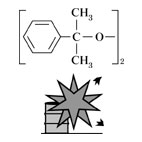 |
01. |
Insufficient Analysis or Research |
 |
02. |
Insufficient Practice |
 |
03. |
Inadequate Imagination |
 |
04. |
Ignorance |
 |
05. |
Insufficient Knowledge |
 |
06. |
Insufficient Study |
 |
07. |
Poor Value Perception |
 |
08. |
Poor Safety Awareness |
 |
09. |
Insufficient Recognition of Risk |
 |
10. |
Condensation Reaction |
 |
11. |
Planning and Design |
 |
12. |
Poor Planning |
 |
13. |
Poor Planning of Changing Raw Material |
 |
14. |
Regular Operation |
 |
15. |
Erroneous Operation |
 |
16. |
No Countermeasure against Abnormality |
 |
17. |
Bad Event |
 |
18. |
Chemical Phenomenon |
 |
19. |
Abnormal Reaction |
 |
20. |
Secondary Damage |
 |
21. |
External Damage |
 |
22. |
Explosion/Fire |
 |
23. |
Bodily Harm |
 |
24. |
Injury |
 |
25. |
1 person injured |
 |
26. |
Loss to Organization |
 |
27. |
Economic Loss |
 |
28. |
Plant Burnt up |
|
|
 |

Explosion and fire caused due to a change from sodium salt to potassium salt at a di-cumyl hydroperoxide manufacturing plant
|
 |
Knowledge Comment: |
 |
Even they are the same alkali, the properties of sodium hydroxide and potasium hydroxide are different ech other. Do not replace easily. |
|
|
|
|